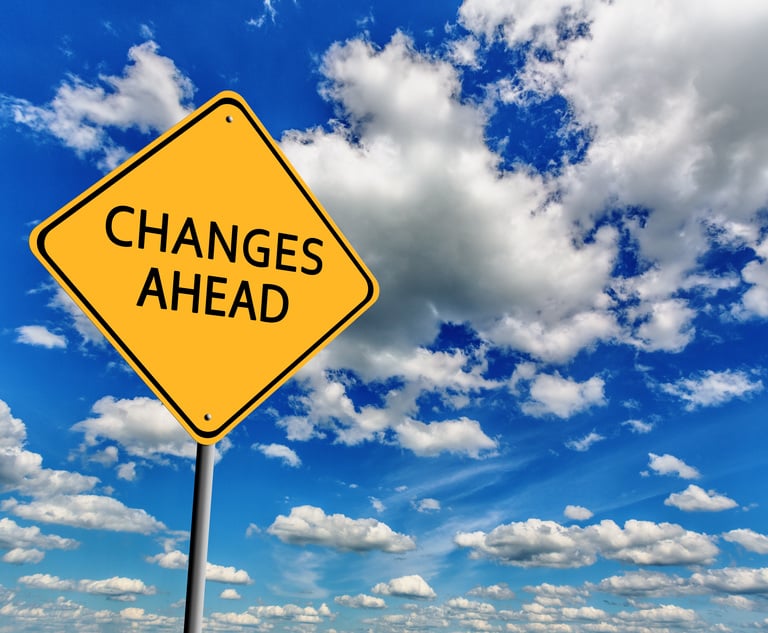Diversity Training Won't Change Your Behavior (or Trump's)
The president may be totally irredeemable, but diversity training generally isn't working for others in the workforce either, according to research by faculty at the Wharton School of the University of Pennsylvania.
July 16, 2019 at 01:51 PM
4 minute read
 (Photo: Shutterstock.com)
(Photo: Shutterstock.com)
I think we can all agree that it wouldn't hurt Donald Trump if he signed up for a little diversity training. (Bonus question: Are employees of the White House required to do diversity training as the rest of corporate America?)
I mean, telling people of color, who happen to be American citizens and members of Congress, to “go back” to the “totally broken and crime infested places from which they came” is such a tired trope. I can't even tell you how many times I was told to go back to China, Japan or Viet Nam when I was growing up in Texas during the '70s. Shouldn't the president of the United States be more sophisticated than those 10-year-old bullies at the Red Elementary School from the Dark Ages?
Trump might be totally incorrigible, but diversity training generally isn't working for others in the workforce either, according to research by faculty at The Wharton School of the University of Pennsylvania. (The study involved over 3,000 employees from large global organizations who participated in online diversity training, measuring their attitudes toward women and racial minorities.)
 “We found very little evidence that diversity training affected the behavior of men or white employees overall—the two groups who typically hold the most power in organizations and are often the primary targets of these interventions,” write the authors of the study in the Harvard Business Review.
“We found very little evidence that diversity training affected the behavior of men or white employees overall—the two groups who typically hold the most power in organizations and are often the primary targets of these interventions,” write the authors of the study in the Harvard Business Review.
Repeat after me: It didn't change the behavior of those in power.
But before I get accused of only focusing on the negative, let me give you the positive results from diversity training:
- Bias training helped change the attitudes of those who had been the least supportive of women. After training, this group became “more likely to acknowledge discrimination against women, express support for policies designed to help women, and acknowledge their own racial and gender biases.”
- Bias training prompted junior women to seek out mentorship and be more proactive about their careers. The researchers speculate that the training made women more conscious of bias in the workplace. Or that “the institutional effort to promote inclusivity led these women to trust that it was safe to advocate for themselves.”
- Gender bias training made employees more conscious of bias faced by racial minorities. “It appears that helping people recognize biases towards one marginalized group of people can have positive spillover effects on their attitudes and behaviors towards other marginalized groups.”
How wonderful and touching that so many attitudes were changed through training. But so what?
Again, the bottom line: Training didn't change behavior. And that means diverse and female employees are still not getting what they need to advance, such as mentorships or recognition. For instance, three weeks after the training, employees were asked to nominate coworkers they'd like to meet for coffee. Here's what the researchers say about the result: “Contrary to our expectations, the training didn't prompt men to nominate more women, nor did it lead senior women to nominate more junior women.”
Sadly, this all also reconfirms research conducted by the legal industry. In a study by the American Bar Association's commission on women and the Minority Corporate Counsel Association, the finding was that the profession's gender equality and diversity efforts over the last three decades have been largely useless and a waste of time.
Edward Chang, a doctoral candidate who worked on the Wharton study, offers no comfort that diversity training in law firms would be better. “We don't really have any reason to expect that the effects of training would be different among lawyers than the effects we found in our research.”
But Chang tells me that management support can tip the balance. “The more supportive you are of diversity prior to training, the more likely you are to change your behavior as a result of training; the less supportive you are, the more likely you are to change your attitudes but not your behaviors.”
So there we are again: We won't see a meaningful spike in the percentage of women or minorities in the legal profession or anywhere else controlled by white, middle-aged men unless those white, middle-aged men make it a true top priority.
Not to be a constant naysayer, but I'm not seein' it.
Contact Vivia Chen at [email protected]. On Twitter: @lawcareerist.
This content has been archived. It is available through our partners, LexisNexis® and Bloomberg Law.
To view this content, please continue to their sites.
Not a Lexis Subscriber?
Subscribe Now
Not a Bloomberg Law Subscriber?
Subscribe Now
NOT FOR REPRINT
© 2025 ALM Global, LLC, All Rights Reserved. Request academic re-use from www.copyright.com. All other uses, submit a request to [email protected]. For more information visit Asset & Logo Licensing.
You Might Like
View All

Change Is Coming With the New Trump Era. For Big Law, Change Is Already Here
6 minute read

Trending Stories
Who Got The Work
J. Brugh Lower of Gibbons has entered an appearance for industrial equipment supplier Devco Corporation in a pending trademark infringement lawsuit. The suit, accusing the defendant of selling knock-off Graco products, was filed Dec. 18 in New Jersey District Court by Rivkin Radler on behalf of Graco Inc. and Graco Minnesota. The case, assigned to U.S. District Judge Zahid N. Quraishi, is 3:24-cv-11294, Graco Inc. et al v. Devco Corporation.
Who Got The Work
Rebecca Maller-Stein and Kent A. Yalowitz of Arnold & Porter Kaye Scholer have entered their appearances for Hanaco Venture Capital and its executives, Lior Prosor and David Frankel, in a pending securities lawsuit. The action, filed on Dec. 24 in New York Southern District Court by Zell, Aron & Co. on behalf of Goldeneye Advisors, accuses the defendants of negligently and fraudulently managing the plaintiff's $1 million investment. The case, assigned to U.S. District Judge Vernon S. Broderick, is 1:24-cv-09918, Goldeneye Advisors, LLC v. Hanaco Venture Capital, Ltd. et al.
Who Got The Work
Attorneys from A&O Shearman has stepped in as defense counsel for Toronto-Dominion Bank and other defendants in a pending securities class action. The suit, filed Dec. 11 in New York Southern District Court by Bleichmar Fonti & Auld, accuses the defendants of concealing the bank's 'pervasive' deficiencies in regards to its compliance with the Bank Secrecy Act and the quality of its anti-money laundering controls. The case, assigned to U.S. District Judge Arun Subramanian, is 1:24-cv-09445, Gonzalez v. The Toronto-Dominion Bank et al.
Who Got The Work
Crown Castle International, a Pennsylvania company providing shared communications infrastructure, has turned to Luke D. Wolf of Gordon Rees Scully Mansukhani to fend off a pending breach-of-contract lawsuit. The court action, filed Nov. 25 in Michigan Eastern District Court by Hooper Hathaway PC on behalf of The Town Residences LLC, accuses Crown Castle of failing to transfer approximately $30,000 in utility payments from T-Mobile in breach of a roof-top lease and assignment agreement. The case, assigned to U.S. District Judge Susan K. Declercq, is 2:24-cv-13131, The Town Residences LLC v. T-Mobile US, Inc. et al.
Who Got The Work
Wilfred P. Coronato and Daniel M. Schwartz of McCarter & English have stepped in as defense counsel to Electrolux Home Products Inc. in a pending product liability lawsuit. The court action, filed Nov. 26 in New York Eastern District Court by Poulos Lopiccolo PC and Nagel Rice LLP on behalf of David Stern, alleges that the defendant's refrigerators’ drawers and shelving repeatedly break and fall apart within months after purchase. The case, assigned to U.S. District Judge Joan M. Azrack, is 2:24-cv-08204, Stern v. Electrolux Home Products, Inc.
Featured Firms
Law Offices of Gary Martin Hays & Associates, P.C.
(470) 294-1674
Law Offices of Mark E. Salomone
(857) 444-6468
Smith & Hassler
(713) 739-1250










